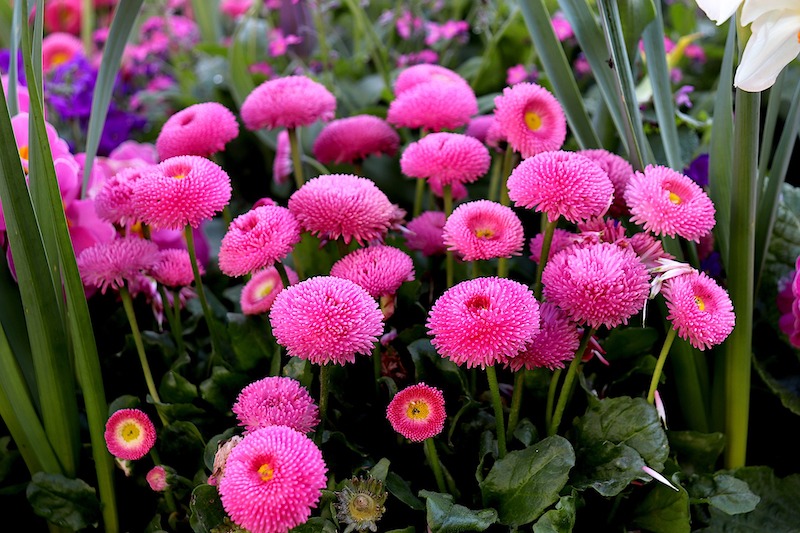Growing English Daisy
English Daisy, also known as Bellis perennis, is a delightfully cheery, cool-season plant with colorful pom-pom flowers that are native to Europe. English Daisies bloom in March and April often when pansies and early tulips are at their showiest. English Daisy grows from the crown and has a spreading mat form. They are a perfect choice for growing in pots.

They grow in Hardiness Zones 4-7 and are considered annuals, biennials or perennials, depending on the growing zone. They are most often grown as biennials where they produce foliage in their first year and flower in their second year. Once temperatures start to climb, English Daisy will start to disappear until the following spring, when their seedlings often pop up. They come in many colorful varieties, making them a perfect cool-season flowering groundcover.
Planting English Daisy
Plant English Daisy in full sun where it will receive at least 6 hours of direct sunlight daily to produce the best blooms. Plant in evenly moist, well-draining fertile soil that is rich in organic matter such as garden compost. If you are located in warmer growing zones, English Daisy will appreciate a bit of afternoon shade because these cool-season plants may stop blooming altogether if exposed to intense sun and heat.

Watering English Daisy
English Daisy likes the soil consistently moist and is challenged in extended periods of dry or drought conditions. Do not overwater these perennials because they are prone to root fungus, so planting them in well-draining soil is key.
Fertilizing English Daisy
English Daisy will benefit from being planted in fertile, organically rich soils. You can improve average garden soil by applying a generous topdressing of garden compost. This will provide beneficial nutrients to the plants. You can also apply a well-balanced organic fertilizer early in the spring to encourage blooming.
Pruning English Daisy
Deadhead spent flowers to spur on new blooms and tidy up the plant. Deadheading also helps to reduce self-seeding. If you notice any dried or yellowing leaves, remove and discard them. Remove all spent foliage in early spring before new growth emerges.
Caring For English Daisy in Pots
English Daisy is lovely when potted together with early daffodils, pansies, and dianthus as companion plants, which have the same care requirements. They are lower growing so pairing them with mid-to-tall flowering plants will make a lovely spring display. The soil must be well draining and rich in organic matter, and the container should have adequate drainage holes. Apply a well-balanced liquid fertilizer, diluted to half strength, in early spring to promote flowering.

Winter Care for English Daisy
English Daisies can tolerate cold winters and often reseed and produce additional plants the following spring. Provide a light layer of organic mulch around the base of the plant to help insulate the root zone and protect the plant from harsh winter weather.
 |
Author Chris Link - Published 03-10-2023 |
